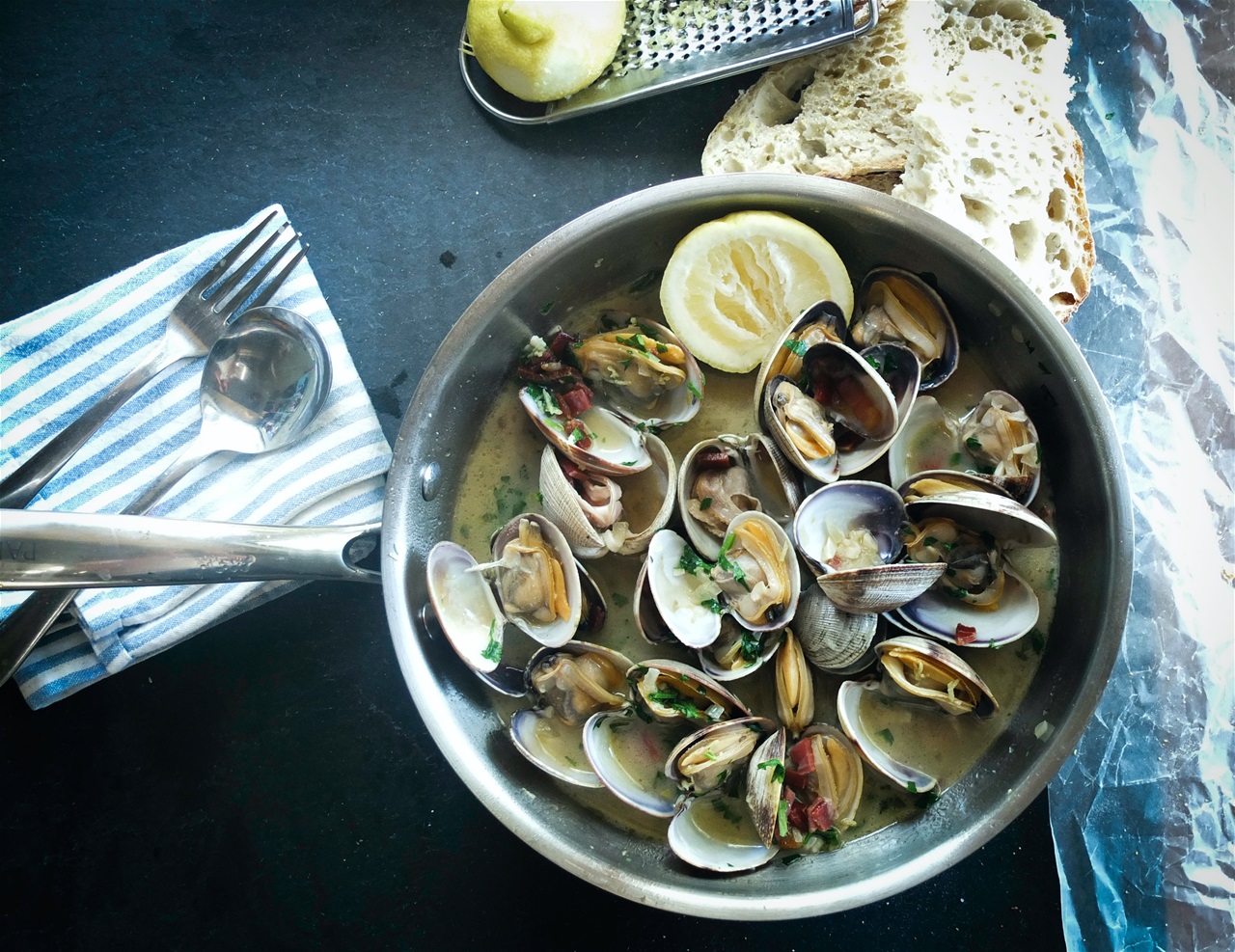Shellfish Foraging, its benefits and climate change concerns.
When my husband suggested that we go on a half-day shellfish foraging course on the tidal flats of Hood Canal with Human Nature Hunting school, not too far from where we live in Seattle, my first reaction was, “that sounds nice… how cold will it be in March?”. But after enquiring more, I realized it would be a great way for us to connect with nature as a family and learn more about how our ecosystem works in a fun way. Being fortunate enough to live near the ocean in the Pacific Northwest, I would have been crazy not to act on this opportunity to explore at least some of it. The Pacific Northwest is known as the leading producer of farmed shellfish in the nation and also includes a bounty of seafood from wild salmon to steelhead. I shook off my distaste for the cold and purchased a one-day shell fishing license for $11.95 (kids under 15 are free).
We began our journey in a park near Brinnon, where we met Bruce, our instructor and Taus, a Danish Chef, who along with his wife were already planning our shellfish feast to eat after our expedition. Following introductions, we received all the necessary tools and an overview of the rules and regulations, including instructions on how many clams and oysters we were allowed to collect (40 clams and 18 oysters per person). Soon, our group of 15 from all walks of life, were being led down to Duckabush beach where Bruce reminded us to take a pause and take in the surrounding scenery. With views of the snowy peaks of the Olympic mountains, it was breathtaking.
Next on our mission, we were shown how to identify clams, where to find them and how to dig for them. Wrapped in a bundle of layers, rain pants, and boots we grabbed our trowels and began to rake our way into the sand to see what we could find. Each clam had to be a minimum of 1.5 inches to be good enough to take, any smaller and we had to make sure to cover them up with sand in order for them to continue to grow. Our start was slow but soon we were on a roll and our bucket began to fill.
An hour and a half later, it was time for a glass of hot toddy and to sample a raw oyster with a dressing of our choice. While I didn’t know any of these people, I could already feel a sense of camaraderie building up, especially when everyone gathered around to support our son’s mission of swallowing his first oyster. While the day was interesting, despite the cold, it was also proving to be fun. As soon as we had warmed up, Bruce demonstrated how to shuck oysters and the next hour was spent foraging for them, careful to ensure that each oyster shell was a minimum of 2.5 inches in size.
On our arrival back at base, a fire was built and hot toddy and wine were served with an incredible gourmet meal of our own freshly foraged shellfish. It truly was the most wonderful feast. We had steamed clams, fried breaded oysters and handmade bread. Everyone agreed that eating wild shellfish foraged by our own hands was a fantastic experience and to waste any of it meant so much more. Diving in to this other world, away from screens and being by the sea surrounded by plant life and these amazing creatures of the ocean is a day I will always remember. It gave us a greater respect for their environment, reconnected us to the origins of what we were eating, while also being a reminder of our dependency on nature for survival. Following this rewarding and informative experience, we left a couple of hours later feeling confident that we could forage and prepare the shellfish ourselves on our next outing.
Reflecting on the day, something that really stood out to me about Bruce, was the sincere and genuine interest, passion and concern he has for nature. It was obvious to me just how much he respects and cares for the land, the future of it and why he set up his school Human Nature Hunting to help people tap in to their inner hunter/gatherer and give us a greater awareness of our connection to the Earth. Both Bruce and Taus really know what they are talking about and were very generous in sharing their knowledge. It was a great way to spend an afternoon together as a family and to further teach our son and ourselves about the importance of looking after the land and how to be good stewards of it. Just as digging out the clams and oysters and being able to eat them for our dinner was a rewarding experience, it was also a great reminder for us that we can help play more of a part in mitigating climate change by taking the time to learn to eat in these kinds of ways – in ways that have little impact on emissions. While I know not everyone has easy access to these types of beaches, it’s a worthwhile experience if you do happen to be near one sometime. It’s a great way to spend time with family and friends, while also connecting to the land but always be careful to check the harvesting seasons as they vary depending on where you are.
Benefits of shellfish
While I had known that shellfish support the region with money and jobs, I had not been aware just how much they provide other important ecosystem services that benefit us as humans. They are nature’s water filters, helping to filter the ocean of excess pollutants and nutrients and are considered a keystone organism that an ecosystem depends on in order to function. Even when they are removed from marine environment, such as when harvested for food in aquaculture, they will recycle nutrients from the sea back to land. According to the BBC, “with a higher protein content than many meats and plant crops, and high levels of essential omega-3 fatty acids and micronutrients, like iron, zinc and magnesium, this specific group of shellfish has the potential to ameliorate many global food issues. This is particularly relevant to child malnutrition, as many of these nutrients are especially crucial to growth, and the planet stands to gain from their increased consumption too. Bivalves can be both wild-harvested and actively farmed offshore and in coastal areas, with a fraction of the environmental impact of more traditional animal proteins”.
Climate change concerns
They are also important heritage markers, and have sustained local tribes and farmers for hundreds and even thousands of years. But, sadly with the increasing risks of climate change and the rising sea water temperature, there is already anxiety for the future of these wonderful sea creatures. According to the National Ocean and Atmospheric Administration, roughly 25% of carbon dioxide emissions are absorbed into the worlds’ oceans. With an increase in atmospheric carbon dioxide due to the burning of fossil fuels, it is changing the ocean’s chemistry and is causing what is known as ocean acidification. This acidification contributes to the clams, mussels and oysters having a harder time building and repairing their shells resulting in shorter lifespans and weaker shellfish larvae. This could threaten thousands who rely on shellfish for their livelihoods, not to mention the additional effects it will have on marine organisms and fish species.
Bill Dewey, director of public affairs for Taylor Shellfish, the largest producer of farmed shellfish in the United States says “By the end of the century it is predicted that ocean acidification will increase by 100% to 150%.... It’s an alarming story to raise attention to ocean acidification, but it’s also a positive story to say that if we all work together and collaborate, besides needing to address the source of the problem, which is carbon pollution, there are ways that we can adapt and mitigate and that’s what we need to focus on”.
Oceans cover more than 70% of the surface of our planet and supply 50-80% of the Oxygen we need to survive, making them essential to our life on earth. With scientists stressing that global carbon dioxide emissions must decline by 2030, if we want to make a significant change to our climate crisis we need to look at how we can all play our part in helping to slow it down. By collaborating and looking at the positive things that we can do, together we can make a difference.

